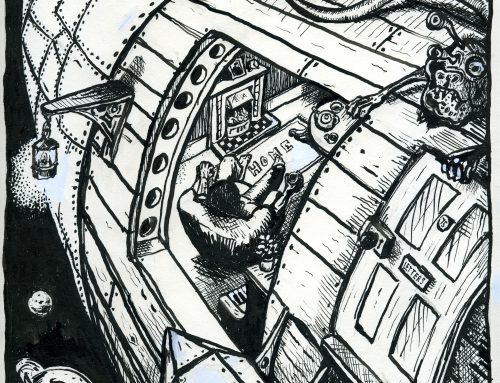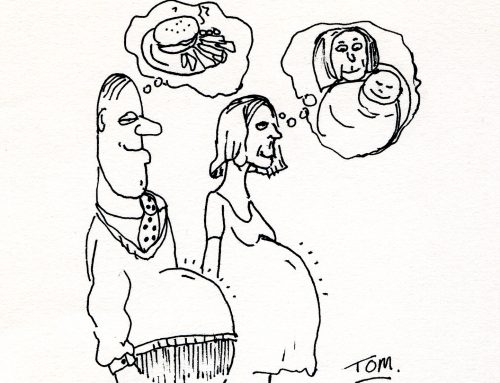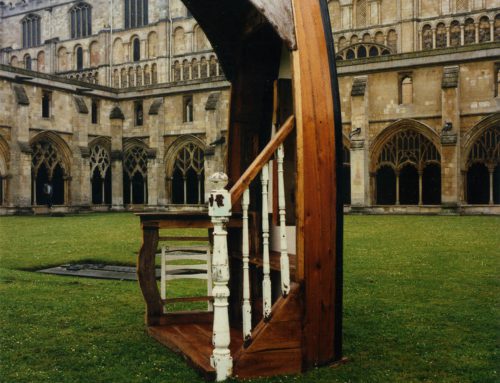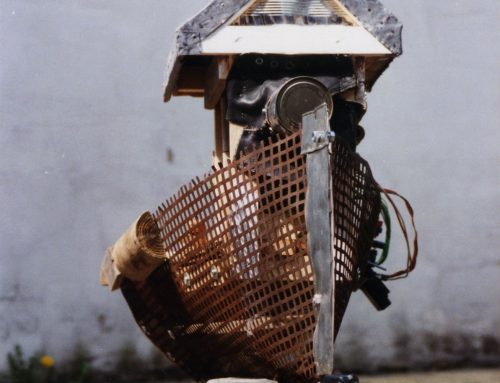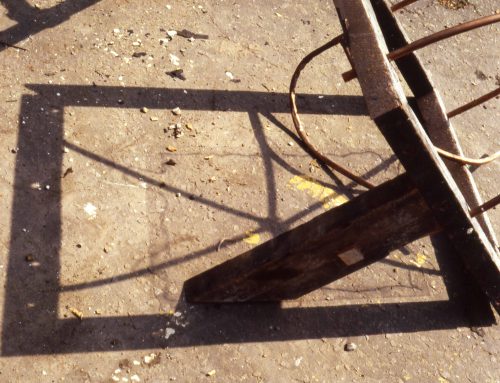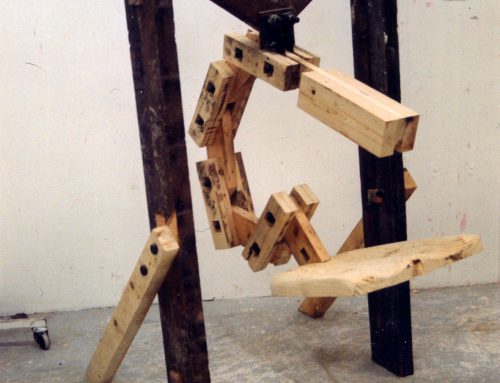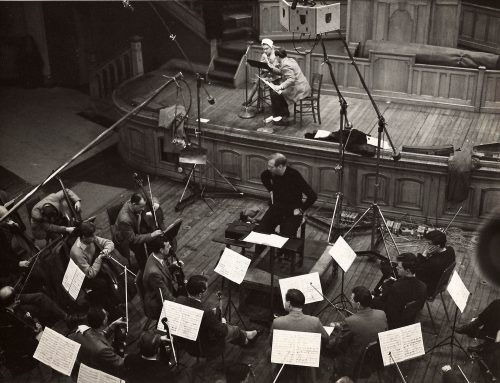For nearly 25 years, Piers Allardyce has earned his living as a professional photographer. Throughout the 1990s he worked for the Melody Maker, shooting some of the world’s top acts, but in more recent times his work has appeared in publications as different from one another as The Times and OK! Magazine. Piers explains how his interest in working with people led to a career behind the lens.
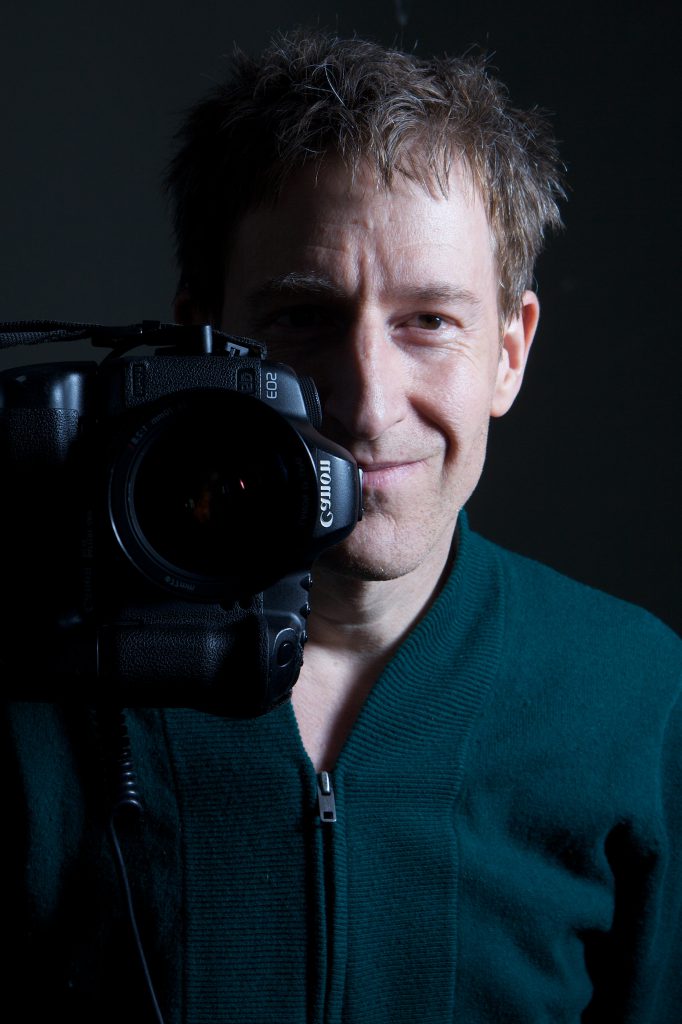
Piers Allardyce self portrait shot at home 17 March 2011
“I don’t think the act of taking pictures is actually very interesting at all,” insists Piers Allardyce. “Obviously what the pictures look like is important, but I don’t think the mechanised side of photography has me in its thrall. For me it is people, the experiences you come away with and what you’ve learnt.
“I did a job recently that perhaps a lot of photographers would laugh at. I had to photograph a couple of people who’d won awards for decorating their balcony with flowers and plants. I had to go to this car park on the Adelaide Road in Swiss Cottage, and on top of this car park a man had made an allotment by importing 13 tones of earth. He’d created this rural paradise and I learnt something about him that was very interesting; so you always take something away from the job. So I think it is less about photography and more about people and their story.
“If you are ploughing the same path every time it is going to get pretty boring and repetitive, so if you are being commissioned here there and everywhere to do different things, it doesn’t matter how big or small something is, it is always enjoyable and you can nearly always take something away from the experience.
“I also think it is sometimes a mistake to turn work down because it’s very easy to lose clients and not to have them replaced. Reputations are important but they can also be taken away. They are not necessarily permanent and I know a lot of photographers who are struggling or have gone out of business. Ones who were reasonably successful but are no longer working, or if they are they’re working in a very quiet, almost non-existent kind of way.”
People Person
Piers’ interest in people is fundamental to his work and it has always been that way. When he planned to go to college, it wasn’t to learn the art and science of photography, but with the intention of studying sociology. Quite whether he would have ended up as a photographer if he had pursued sociology is debatable, but a mistake by his A-level exam board made doubly sure he didn’t commence the training he had planned to do.
“One of the reasons I became a photographer was that my A-level results weren’t as good as I thought,” explains Piers. “Little did I realize that I’d actually been downgraded in my sociology A-level exam. I sent off all these UCCA and PCAS forms in expectation, but when my results came back I was absolutely dumbfounded, crestfallen, and really upset, because I was pinning my whole future on it.
“My then girlfriend, who was studying for a sociology degree, had mentored and coached me through my preparation and she said ‘They’ve made a mistake.’ I said, ‘What do you mean they have made a mistake?’ She said, ‘I know they’ve made a mistake because I know your abilities,’ and she told me about this exam review procedure. The college did everything to put me off, saying that I’d have to pay for it and that in the history of the college only one student has had their exam upgraded and that was from an N to an E. I said ‘I don’t care, I want it reviewed and I want it reviewed this side of autumn.’
“I was upgraded from and E to a B, but the result came through in December so I missed my place at college and in that three or four month period I became a photographer’s printer. But if I’d been given the correct result first time around, I would have gone on to a University or Polytechnic and studied something in social sciences. So my whole career turned on a sixpence.
“It’s odd how fate turns out. I’m not necessarily someone who believes in fate but I know these extraordinary things happen to other people and, on reflection, I’m glad that it happened to me. I probably would have struggled my way through something in sociology. I possibly would have enjoyed it but it would have been fairly poorly paid I would have thought.
“I like the career that I have had because there are so many talking points. It’s difficult to know whether I would have got that from something more serious. I was always interested in sociology because I was good at it and interested in people, but that is also why I like photography. It opens doors.”
There are many reasons why Piers has done well as a photographer. First and foremost, his genuine interest in the lives of his subjects has enabled him to get great results. He is also a deceptively forceful character; leaving a lasting, and mostly positive, impression with the subjects he encounters. But nothing has had so much of an influence on the direction of his career as his location, for it is hard to imagine that he would have ended up doing the same work if he were not based in the heart of the capital.
“Being in London has been important in all sorts of ways,” says Piers. “London is not just the media capital of England; it is probably the media capital of Europe. Most of the work is here and so is most of the population. Having a London address means that people are more likely to contact you than they would if you were living in a small town with less competition, because this is where things get commissioned. I think people tend to take you a bit more seriously if you are from London. It is more of a subliminal thing than a conscious effort on the part of the picture editor to commission. I don’t think it’s a snob thing, it’s just the way of the world – how things happen to be. If I lived in Cambridge, for example, although I might continue to keep the majority of my clients, I think I might find it harder to make new ones.
“The other advantage is you can respond quickly. You are not going to get caught in a jam or be at the mercy of a rail dispute. I can drive but I don’t drive to work because I don’t need to in London. Occasionally I took taxis to jobs when I was living very centrally in Westminster, because even if I couldn’t claim the cab fare it would only be about £10, but these days, having a family, I have to be careful and more prudent with money.”
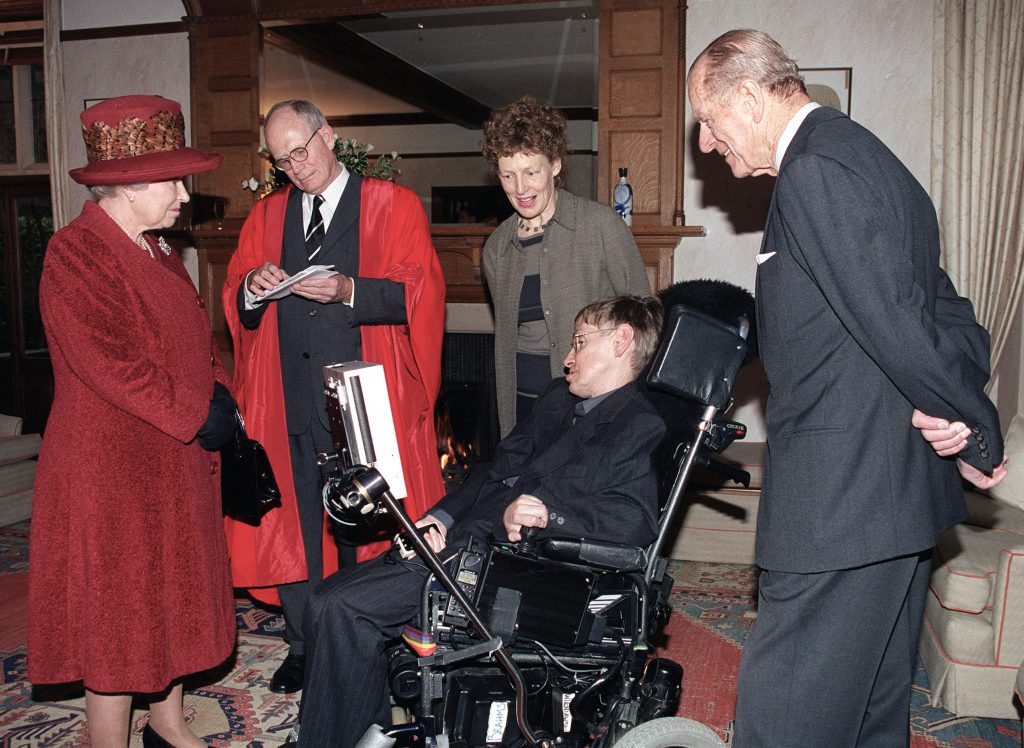
Her Majesty The Queen, The Dean of Trinity Hall Cambridge & HRH Prince Philip 23 November 2000
Photos by Piers Allardyce
A very peculiar meeting of minds. Dripping wet and steaming from the rain, I was terrified that I would trip up or knock the queen over with my big camera bag. I was transfixed by her presence. I must have scutinised ever inch of her to see if she was real including the little hairs on the nape of her neck.
in such a confined space. (Please see quote)
Getting Into Photography
By the early 1990s, Piers was one of the Melody Maker’s regular freelance contributors, photographing everyone from Pink Floyd to Radiohead. Outside of the music industry, he specialized in portraiture and social events, but never restricted himself to celebrity or high-profile subjects. These days, he is just as likely to be covering a wedding as he is photographing the Queen, Bill Clinton, Tony Bair or Margret Thatcher. He has also had his pictures exhibited in the National Portrait Gallery and is involved with the charity Changing Faces, photographing subjects with facial disfigurements.
Piers may have eventually found himself photographing US presidents, prime ministers and the Queen, but it seems he had no particular ambitions when he first picked up the camera. He explains where it all began for him.
“It starts with family, then you find yourself photographing friends and before you know it you are photographing strangers. At that point you’ve turned the corner because most people have no vested interest in strangers. Once you start doing that you recognise that there is a bigger, wider world out there and I think the enthusiasm usually stems from that.
“It first started for me when I was living on this council estate in Brixton. It was a very left leaning community where lots of residents got involved and I used to photograph their meetings and some of the local residents nearby. So I was taking quite a lot of pictures in and around the Brixton area. I was pretty careful, because back in those days it could be tricky. The main riots were in 1981 and then there were a few more in 1985. I moved to Brixton in about ’86 but I still didn’t feel terribly comfortable walking about the streets taking pictures. It was asking for trouble really!”
Even in those early days, Piers had been wise enough to invest some money in decent camera equipment and had found a way to access local film processing facilities. At first he set-up a darkroom from home in Brixton, before shifting operations to an address just across the road, where he continued to print for many years.
“I had a bit of money behind me so I was using proper SLR cameras,” Piers recalls. “They were fully manual and I was shooting mostly black and white film. By this point I had learnt to develop pictures myself because I became a photographer’s printer long before I became a photographer. And I learnt my craft in the darkroom, mixing chemicals, developing film, drying them out, producing prints, drying the prints and learning all the other methods that a printer uses.
“I already had my own darkroom setup when I started working for a group of south London newspapers in Morden called the South London Guardian Group and they had about a dozen free sheets which they used to dispense in the suburbs. It wasn’t very well paid; I think I got about £115 a week. It was a five day week but quite often I’d go in on a Sunday so I didn’t have to go in on Monday. I quite enjoyed it for a short while because it was a novel experience, but I didn’t like the people I was working with, particularly. I thought they were very dull. They would always talk about the traffic and the weather but weren’t interested in music, politics or any of the things I was passionate about. In the end I couldn’t wait to escape so I only lasted about four months in that job. On reflection maybe I should have stayed a bit longer, I don’t know, the thing was I was gathering moss, really. I don’t think it could have projected me much further.
“But before I left South London Guardian Group I’d put a portfolio of music pictures together over a period of three or four months and I was cheekily using the newspaper’s facilities, paper and chemicals to print some of my work.
“While I was printing other peoples pictures in the paid job I was thinking, ‘Well, I can do a lot better than this.’ I wasn’t particularly interested in what they were producing, or in local new stories at the time, but I did have a very profound interest in music and I thought, ‘Well, perhaps I could marry the two; perhaps I could be a photographer on the one hand and go to all the shows that I’d yearned to go to on the other, and somehow combine the two things.
“So what I would do was phone up music venues – some of them were quite big as well – and tell them what I was doing and, amazingly, they would leave a laminate for me on the door. A laminate is basically a free pass that they issue. That would never happen now, I don’t think. So I went to all sorts of shows, but essentially it started with a Nick Cave and the Bad Seeds gig in 1988. I think I shot one roll of film and developed it in a dark room in a room on a Brixton council estate just over the road from where I was living. And I thought, ‘I can do this!’ and that’s what gave me the inspiration. I didn’t look back after that and gradually the commissions started coming in. Not particularly thick and fast, because I wasn’t very proactive, but shortly after the Nick Cave gig I left the Guardian group.
“I was very fortunate, because when I started 22 or 23 years ago, there were far fewer photographers around. There weren’t agencies like there are now, but you had to know what you were doing because there was a lot more skill involved.
“My very first commission was for the South London Press. That would have been some time around 1988. I got the job because I knew quite a successful writer called Mark Timlin who used to contribute articles to the South London Press and he put me forward. He lived in Streatham and I used to see a lot of him. One of his books was successfully adapted into an ITV four-part series.
“I remember feeling very nervous about the commission. It was quite amusing if I look back on it because I had to photograph this old chap who had won a food hamper from his local Co-operative. I got paid the princely sum of £16 and I remember being really enthusiastic and triumphant that I’d actually got the commission. But I made the mistake of photographing his hamper in the isle, so it was a really busy background and I didn’t get another commission from the South London Press after that. I don’t think they were terribly impressed!”
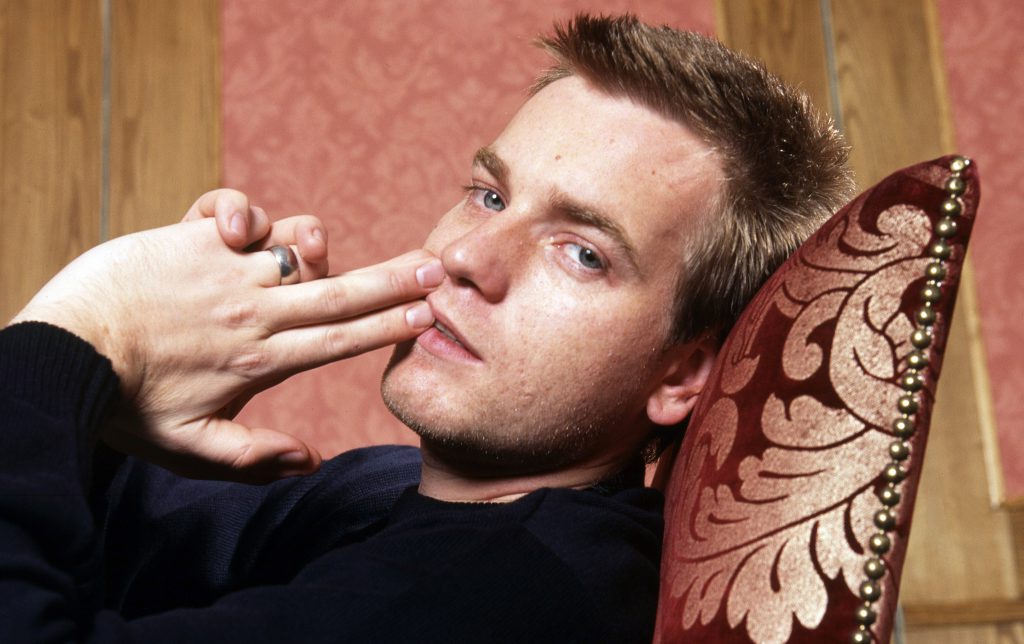
Ewan McGregor shot at the Intercontinental Hotel Park Lane 8 October 1997 to promote A Life Less Ordinary.
Photos by Piers Allardyce
Ewan was one of my favourite sisters. He breezed into the room and said “were do you want me?” He continued to talk throughout the whole session which lasted a little over 10 minutes as he was in such demand. “If this was the States, you would only have 5 minutes” he suggested.
Second Chance
Despite this early setback, it wasn’t long before Piers started working for the music papers, many of which had huge circulations. Two of his early jobs were for the title Echoes, photographing Peabo Bryson followed by Lou Rawls, and later on he found work with the music paper Sounds. However, it was Melody Maker with whom he would have the most lengthy and productive relationship.
“Back in those days they sold quite well, the ‘inkies’, as they were known, so I took my portfolio to four or five different music titles and that included Melody Maker. I met the art editor, I think it was in April 1989, and, I must admit, didn’t hold out much hope. But, incredibly, I got a phone call from them about two months later. I was commissioned to go to the Town and Country Club, as it was known then, to photograph the Pixies. I remember it as an amazing gig. I hadn’t seen a crowd of people like that before. I mean everybody’s feet were leaving the ground – everyone was jumping. There must have been about 2000 people, it was a raucous atmosphere, the people were really enthusiastic, there was stage diving and the band looked cool. And I thought, ‘My God, I’ve arrived!’
“Then I had a rude awakening. A couple of weeks later the review came out, but it wasn’t attached to my pictures! They’d actually used a stock library shot that someone else had taken at a previous gig and my heart absolutely sank. I thought, ‘My God, I don’t get paid, I don’t get a by-line and I didn’t get published,’ and I just thought, ‘Oh well, that’s another closed chapter.’
“But I think it was an oversight. They had either lost the pictures or weren’t aware of my existence. They probably forgot that they’d sent a photographer along – they were pretty amateur, I always felt. Things were always going missing, despite the fact that they were a legitimate business based on the 26th floor of King’s Reach Tower just one above the NME. They were a strange bunch of people. There wasn’t quite a hippy ethic, but they were a real mish-mash of individuals and you could tell almost at a stroke, just by looking at the kind of clothes they were wearing, what kind of music they were into. Some of them were proper indie kids, some were interested in their trance and rave music, and there were other genres that they used to cover as well.
“The next time the phone rang it was from Melody Maker again and I was sent along to photograph The Fields of the Nephilim. After that I think I had to wait maybe one, or two weeks, certainly no more than a month, before my next commission, and that was the Pursuit of Happiness, closely followed by Pink Floyd at Wembley Arena. I spoke to the commissioning editor about it some years afterwards. His name is Everett True and I suppose it was Everett who gave me my break. He also went under the name ‘The Legend’. He had musical ambitions of his own, really, and deep down he was very much a frustrated musician. I know that’s easy to say about music journalists, but I think in this instance it is definitely true.
“Everett wrote a book about Nirvana. He used to hang out with Kurt Cobain and travel out to the States and endlessly write about this new band. This was long before they were successful. He used to go off to America for what seemed like weeks on end because he was breaking the Sub-pop label for the readers. That went completely over my head at the time, I have to say. British music in the late 1980s was in a shocking state, very few things were happening, that I recall, until Britpop exploded. There were so many different musical genres for which journalists wrote labels. Genres such as shoe gazing, riot girl and labelling all sorts of other types of music as well.
“Sadly I threw away all my old copies of Melody Maker because I kept moving and couldn’t stock pile them, but I tore out the tear sheets and kept those. It is to my eternal regret now that I slung the mags out. At the time you don’t realize that they are gathering momentum in history.”
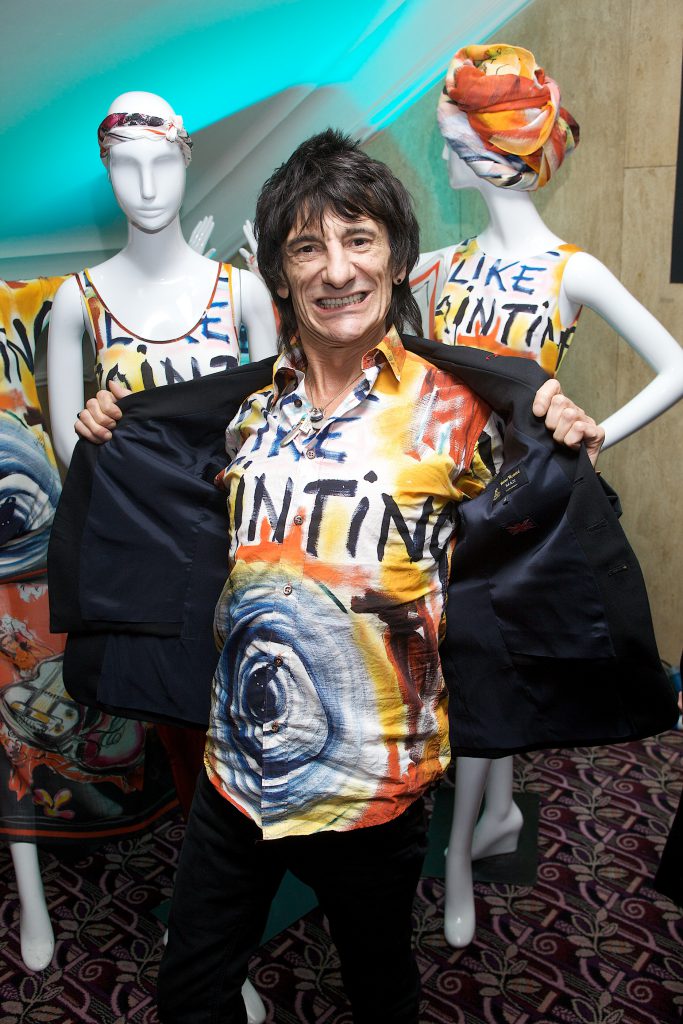
Ronnie Wood, Classic Roll of Honour Awards, Park Lane Hotel 2 November 2009
The Incomparable Ronnie Wood. Ronnie had just left his wife to set-up home with the Russian waitress Ekaterina. These are just a few of his designs.
Working for the Melody Maker
Piers may not have had a photography qualification, but his portfolio had been enough to get him started in the industry. Nevertheless, after starting doing work for Melody Maker he did attempt to formalize his education by taking a course at the London College of Printing, but only stayed for a few months, finding it to be poorly staffed, over subscribed and under facilitated. “We were all sort of grabbing at equipment,” adds Piers. “That would have been ’88 to ’89, I would have thought.”
Fortunately, completing the course proved to be unnecessary. Piers already had the professional experience of working in the darkrooms of South London Guardian Group, the Melody Maker commissions continued and he gradually established himself as one of London’s top live music photographers. Piers recalls what the Melody Maker expected of him in the days before digital photography.
“It was pretty extraordinary really. Sometimes I would go to an all-day festival for Melody Maker and would have to produce all these prints. I had a very perfectionist nature, which meant that, instead of taking three or four hours to do something, it was taking me the whole night sometimes. I remember playing lots of music, occasionally sitting down on a bar stool under the enlarger, otherwise standing up and pacing backwards and forwards, waiting, with the smell of chemicals burring in my nostrils.
“Once I’d produced the prints, I would hose them down in a bath and hang them up to dry, sometimes using a hair dryer to speed things up. I’d then label them and picture reference them sometimes, and then I’d deliver them.
“I’d take the train from Brixton to Waterloo, which in those days was pretty run down, I seem to remember. Actually the whole of London felt very run down at that time. I would go to King’s Reach Tower with a kind of spring in my step. I was always very excited because I wanted to surpass myself and produce better work each time. But the funny thing was, no one was particularly interested in what I was producing, just as long as I came up with the goods. It was very rare that there was any kind of praise. It wasn’t that kind of environment or atmosphere. People were too cool to praise one another.
“I remember feeling pretty intimidated back in the day. I was 26 when I started out at Melody Maker but I felt like a 16-year-old walking into that office. There weren’t any particular legends when I was there, but don’t forget there had been quite a few quite renowned journalists who had passed through Melody Maker in the past. Admittedly, most of the big names worked for the NME – they had all these amazing people like Julie Burchill, Danny Baker, Tony Parsons, Nick Kent, John Savage – but we had a few people at Melody Maker too.
“Caitlin Moran was at Melody Maker. That was very interesting because she, like Julie Burchill, turned up when she was only 16. And I remember she was very passionate about what she was doing. She was young and precocious, and I remember one time, when the reviews editor had done something to upset her, she stood her ground and basically shouted him down. I don’t think he knew which way to look, really. He was so surprised that this kind of spunky 16-year-old girl was talking to him like an equal. I witnessed it with my own eyes – it was pretty interesting.
“Caroline Sullivan, who went on to The Guardian, also worked for Melody Maker. I think she’s still writing for The Guardian. Other notable people who passed through Melody Maker include Andrew Mueller, who has done quite a lot for The Guardian, and quite a few others journalists who went on to write books quite successfully.
“John Harris writes for The Guardian. John and I were the first people to interview and photograph Radiohead. I think it was in about ’91, possibly ’92. No one had ever photographed them before, that’s official! I remember meeting some of the guys later on and spoke to one of the Greenwood brothers about it and he said ‘You were the first; we’d never been photographed by anyone before.’ It was for something called Sidelines in Melody Maker. It then became Advance and then something else, but basically it was an introductory feature on new bands or artists that were about to break through. And the same thing happened to Suede who were dubbed ’best new band’.
“But I very much felt out of my depth and that I was an imposter. Just to put it into some kind of perspective, I hadn’t come from a particularly financially comfortable background, but I had grown up in Hampstead, so I wasn’t from one of the dormitory towns that many of the bands and writers had come from. I wasn’t living in a social backwater so I didn’t have anything particularly to fight against, although I had my own issues and angers and so on. I wasn’t driven by a desire to get out of my home or town or anything like that because I was London born and bred. But many of the journalists and photographers I was working with just wanted to change things fundamentally.
“They were kind of – I hate the expression – lower-middleclass, upper-working class; the kind of writers that were going to forge a career for themselves and show their family and friends where they were going to prove a point.
“I don’t know why I felt out of place, it’s odd, but I didn’t have an anoraks’ opinion of music. I knew my music but I didn’t know my music nearly as intimately as they did. I think a lot of the journalists deliberately aligned themselves to really obscure bands, and quite rarefied types of music. My music wasn’t necessarily mainstream but I’d grown up with Ska, Reggae and a kind of Modish music before I got into synth music. Not the New Romantic thing particularly but I was interested in Ian Dury, Gary Numan and people like that.
“But from being commissioned to photograph live gigs, I was then told to photograph bands for low-key features, so I was kind of building it up. But it was a real slow burner because, although I was mildly ambitious, I wasn’t thrusting or putting my name forward as much as I should have done. I think it was because I had other sources of income. Many of the journalists were struggling financially and living in bedsits. Some might even have been living at home.” TF
Part 2 of our interview with Piers can be found here: Part 2
In Part 2 Piers talks about the equipment he uses, explaining his working methods and his views on the art of photographing people.

